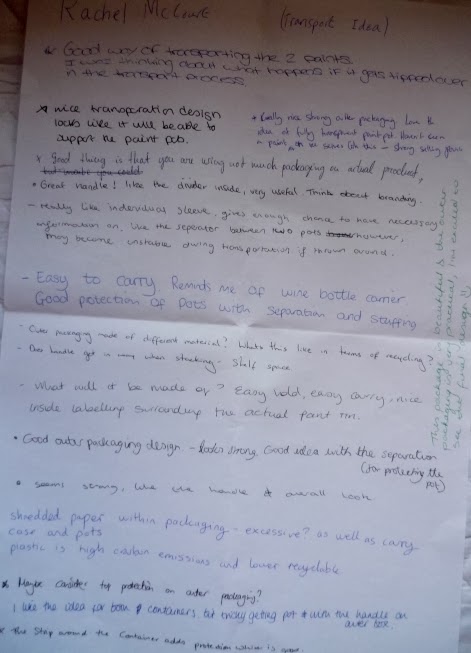
My final paint container is a square tin made from aluminium. This metal is strong enough to protect the contents but is also lightweight, saving fuel costs during transportation. The square shape stands out from the standard circular tins and also makes for less wasted space, as they can be stored and stacked together. Aluminium can be infinitely recycled, and recycling it can save 95% of the energy needed to make it from raw materials. The tin design is also easy for users, they can stir and use straight from the tin, not having to pour into another container. There is also less wasted paint as users can scrape the remaining paint from the bottom. I didn't want to print onto the aluminium directly as this may take more energy to remove in the recycling process. So I made a label and sleeve.
The sleeve is made from recycled paper and printed on using vegetable based inks. The back features information on the company and product, as well as information on how to re-use and recycle the packaging. The brown label is used to protect the tin from scratches and is made from seed paper. The user can either plant this in their garden or use it to grow plants within the paint container itself. The tin can also be re-used as storage, or made into a lantern if you drill holes into it and place a small tea light inside. I drew some small diagrams of the possible re-use options on Illustrator, and it can be random as to which image is featured on the sleeve. There is a small tag attached to the handle showing what colour the paint inside is.
The transport box is made from recycled cardboard and carries two 2.5L paint containers. It features a handle so it is easier for couriers to carry and move about. The handle can be laid down flat as it is fastened with aluminium bolts, so the boxes are stack-able. There is a separator in the middle meaning the two tins do not bash against each other during transportation. During peer feedback some people noted that if the carrier tips over, the paint tins might fall out so I should consider a strap, but I felt this could mean adding more materials when I wanted to keep it minimal, so I decided the design should fit the tins in tightly, so they won't fall out easily.










































